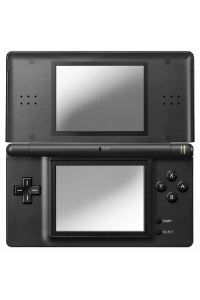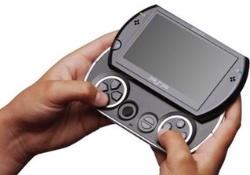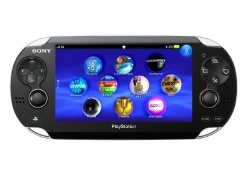The ultimate history of portable gaming (2006-2011)
Pocket change

Pocket Gamer turned five yesterday, so as a special treat to all our loyal readers (and a welcoming gift to our new followers) we’ve dug inside the archives to bring you a history of the seminal developments that have taken place over the last five years.
When the site went live the mobile landscape was a very different place. Apple made Macbooks, Nokia’s N-Gage was still alive (just), Google made search engines, Java was still the de facto choice for mobile gamers, and the DS and PSP were the only two choices for discerning pocket gamers.
So join us now as we take a trip down memory lane, revisiting some of the biggest launches, news events, and announcements from the past five years.
Nintendo goes Lite - prints money (June, 2006) In January, 2006, Nintendo had sold 11 million DS consoles in two years. That figure had risen to 100 million by the time the DSi dethroned the DS Lite in 2009.
In January, 2006, Nintendo had sold 11 million DS consoles in two years. That figure had risen to 100 million by the time the DSi dethroned the DS Lite in 2009.
Was it the slimmer form factor, better battery life (that’s not been bettered by any of the subsequent revisions), or strong showings from traditional franchises like Zelda: The Phantom Hourglass (2007) that fuelled this success? Or was it some brilliant advertising alongside Brain Training in the Christmas of 2006 that finally saw a system accepted by the masses?
Whatever it was, the DS family of consoles went on to become the biggest selling portable of all time, a feat that will be tough to beat.
Apple launches the iPhone (June, 2007) The first phone from Apple caused a bit of a stir back in 2007, thanks to its eye-catching looks, impressive ‘multi-touch’ operations, built-in apps like Google Maps, and eye-watering price.
The first phone from Apple caused a bit of a stir back in 2007, thanks to its eye-catching looks, impressive ‘multi-touch’ operations, built-in apps like Google Maps, and eye-watering price.
Despite this, though, Pocket Gamer’s Owain Bennallack wasn’t mincing his words when he wrote, “we've been left drooling by anticipation of touchscreen games for the iPhone...Watch this space...we expect to be also covering iPhone games before too long!”
Ha! Like that’ll ever happen - oh, wait.
Still, the first model only had a 2G connection, which was pretty poor even at the time of launch.
It would take another year before the iPhone really started to make waves in the mobile world, thanks in no small part to a new distribution service bolted onto iTunes called the App Store.
App Store launches, starts a mobile gaming renaissance (July, 2008).jpg) Launched at the same time as the iPhone 3G, the App Store was Apple’s ace in the sleeve (or rather, all four aces), ditching the Java era's complicated purchasing and pushing aside all the torturous fragmentation issues and the operator skimming that sent developers so comprehensively mad.
Launched at the same time as the iPhone 3G, the App Store was Apple’s ace in the sleeve (or rather, all four aces), ditching the Java era's complicated purchasing and pushing aside all the torturous fragmentation issues and the operator skimming that sent developers so comprehensively mad.
Within a year, the App Store had 50,000 apps (including some stone-cold classics like Flight Control, Rolando, and Fieldrunners) and it had served over a billion downloads.
As Stuart Dredge wrote at the time of its first birthday, “The App Store set a new benchmark for ease of use, in terms of the way you could browse, buy and install apps and games.”.
Mind you, he also wrote, “And, of course, there's wild speculation. If Apple launches a tablet device or netbook, it might also hook into the App Store.”
Ha! Like that’ll ever - damn it, not again.
Google unleashes Android into the mobile world (October, 2008).jpg) It had been rumoured for over a year that Google was interested in making a mobile phone, which everyone had named the ‘Gphone’, hilariously.
It had been rumoured for over a year that Google was interested in making a mobile phone, which everyone had named the ‘Gphone’, hilariously.
In the Winter of 2007 came news the search giant was making a mobile OS called ‘Android’ instead, which wasn’t quite so funny. In fact, it sounded like a sensible move.
Finally, almost a year later, Google and HTC unleashed the first handset to run this new-fangled open-source software, the T-Mobile G1 (HTC Dream in North America), and with it the Android Market.
It’s taken a little longer for the Market to make waves than the App Store needed, but the Android system itself is now looking like it’ll become the de facto choice of mobile operating system for phone manufacturers across the globe, just three years after it was first unveiled.
The N-Gage platform dies. Again (October, 2009).jpg) It took years before it finally croaked, but Nokia’s N-Gage finally died (again) in October of 2009, due to the increasing pressure from the App Store and decreasing interest from developers (and Nokia itself) in supporting it.
It took years before it finally croaked, but Nokia’s N-Gage finally died (again) in October of 2009, due to the increasing pressure from the App Store and decreasing interest from developers (and Nokia itself) in supporting it.
In case you were wondering, the original handset N-Gage (as opposed to the gaming service) croaked way back in 2006, three years after Nokia first launched it with great aplomb. Will we see its like again? Hopefully not.
PSPgo arrives to a muted fanfare (October, 2009) The post-App Store era appeared to have already started making waves with the ‘big two’ portable developers when Sony launched the UMD-less PSPgo in October of 2009. Its main benefits were that it was download-only and - well, I guess it was slightly more ergonomic.
The post-App Store era appeared to have already started making waves with the ‘big two’ portable developers when Sony launched the UMD-less PSPgo in October of 2009. Its main benefits were that it was download-only and - well, I guess it was slightly more ergonomic.
Unfortunately, being download-only didn’t seem to affect the price, which was higher than that of the standard PSP in both hardware and software. And it had a smaller games library, just to add insult to injury.
Having spent the past few years dropping (then rising again) in price, the PSPgo is unlikely to go down in Sony’s history books as the most successful device ever.
Apple launches the iPad, rivals caught napping (April, 2010) Tablet PCs were all dead on arrival by the time 2010 rolled around, the consumer market consisting of exactly zero machines.
Tablet PCs were all dead on arrival by the time 2010 rolled around, the consumer market consisting of exactly zero machines.
However, despite there not being a market to sell to and cynics dismissing it as a ‘bigger iPod touch’, the iPad has single-handily brought the format back from the grave with over 15 million sales in its first year.
The games haven’t been bad, either, with improved versions of PC classics like Monkey Island 2 and indie hits like World of Goo showing that the format can offer something different on top of the usual iPhone ports.
Apple employee has a great birthday, leaves something at the bar (April, 2010).jpg) Bars - great places for drinking on your birthday, not such great places to leave a valuable prototype handset of the next generation of iPhone lying around in, especially when there’s a number of tech blogs sniffing around for a scoop.
Bars - great places for drinking on your birthday, not such great places to leave a valuable prototype handset of the next generation of iPhone lying around in, especially when there’s a number of tech blogs sniffing around for a scoop.
Poor old Gray Powell, who, in a brief moment of drunken madness, accidentally revealed the device that Apple fans around the world were lusting for - the iPhone 4.
Money changed hands as Gizmodo went in hard for the scoop, filling its website with story after story describing every minute detail of the device (and, indeed, the subsequent police raid).
In the end Apple got its phone back, everyone had a good old chuckle at the silliness of it all, and the iPhone 4 went on to become Apple’s most successful handset so far.
Nintendo announces the 3DS (June, 2010).jpg) The third (or is it the fourth?) time that 3D has been resurrected in cinemas was in full swing by the time 2010 rolled around, with James Cameron’s 3D-extravaganza Avatar smashing box office records despite being two-dimensional in all other respects.
The third (or is it the fourth?) time that 3D has been resurrected in cinemas was in full swing by the time 2010 rolled around, with James Cameron’s 3D-extravaganza Avatar smashing box office records despite being two-dimensional in all other respects.
So it’s fitting that this was the time that Nintendo unveiled the 3DS - the first 3D (portable and stationary) console to produce three-dimensional images without the need for any rubbish specs.
With analysts (who are, as we all know, always correct) predicting sales of five million by the end of March, it looks like Nintendo could be onto another winner.
Microsoft re-enters the mobile fray with Windows Phone 7 (October, 2010) You can’t keep a good dog down, nor indeed a multi-billion dollar multi-national corporation.
You can’t keep a good dog down, nor indeed a multi-billion dollar multi-national corporation.
After being utterly pummeled in the US market (its key territory) by RIM, Apple, and Google over the previous few years, Microsoft scrapped Windows Mobile and completely rewrote it, returning as Windows Phone 7 in October of 2010.
By all reckoning the system has been fairly underwhelming in terms of sales so far, despite generally positive critical reaction to the new system.
However, the recent deal with the world’s largest phone manufacturer may see the platform grow into a serious competitor in the near future.
Sony announces the NGP (January, 2011)
 Sony isn’t resting while Nintendo takes gamers’ cash with the 3DS. In January of 2011 the Japanese company finally revealed the PSP2 - albeit in the form of the Next Generation Portable (NGP).
Sony isn’t resting while Nintendo takes gamers’ cash with the 3DS. In January of 2011 the Japanese company finally revealed the PSP2 - albeit in the form of the Next Generation Portable (NGP).
Packing in more power than a super-powered power station, the quad-core NGP may not be quite as powerful as the PS3 home console, but it stomps all over the 3DS’s relatively meagre specs and has caused quite a stir with the ‘triple-A’ developers.
However could the NGP really mark the last generation of dedicated portable gaming consoles, as John Carmack believes? Does Microsoft really have a chance in the mobile market against Google and Apple? Will there be an iPhone 5 out in a few months time? (Yes.)
Keep checking Pocket Gamer for answers to all these questions (and more) and here’s to another five successful years. Many thanks for reading!
